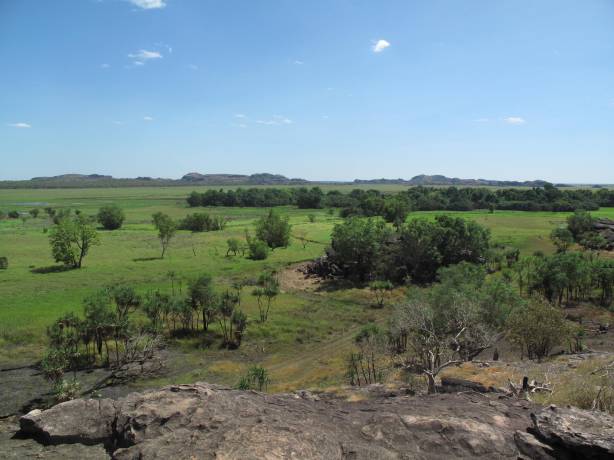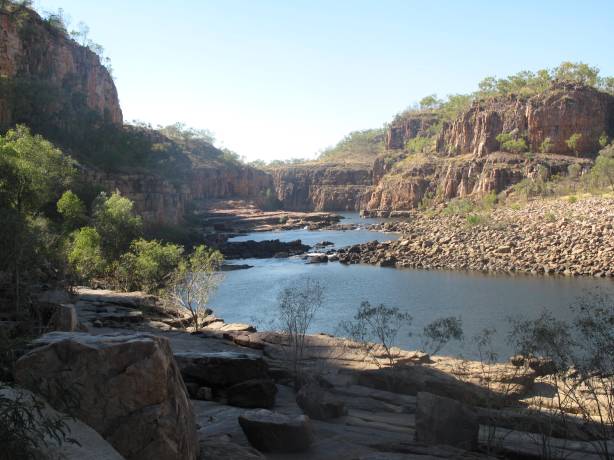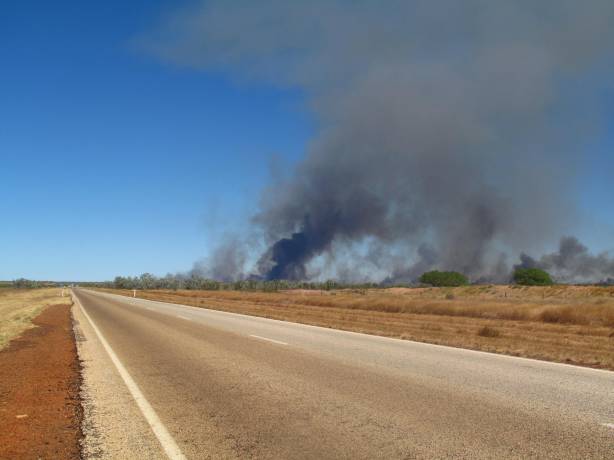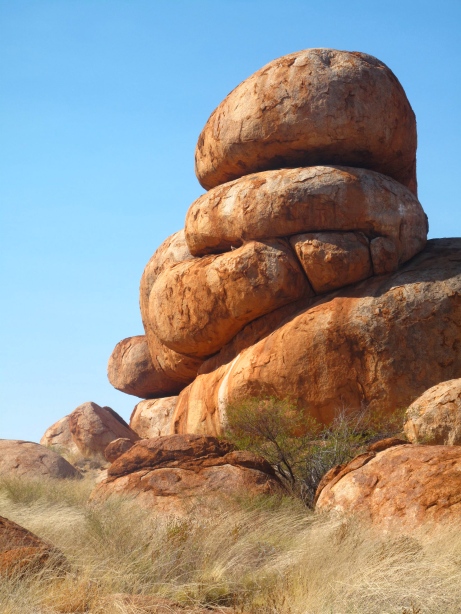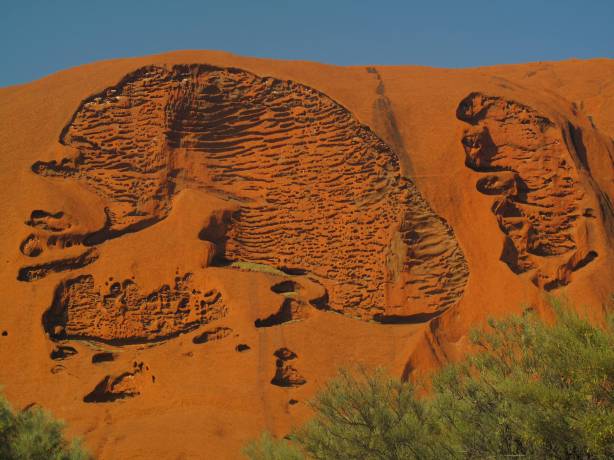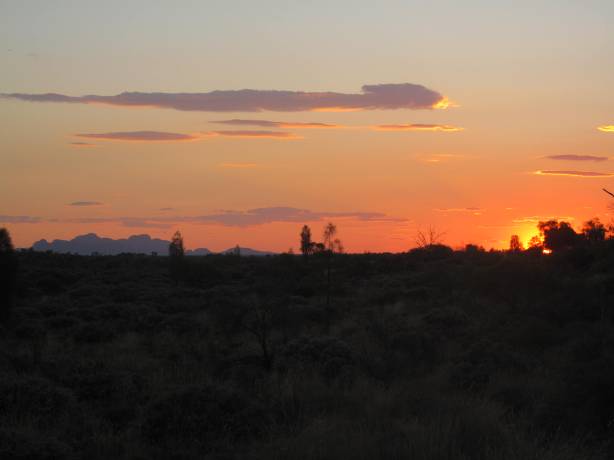Arriving into Australia’s Northern Territory was like stepping into another world. I am not sure how much it was me having been away from Australia for two years, or the fact that this was really a different Australia than what I’ve always known, but immediately I felt that the experience of travelling in one’s country is not always – perhaps even never – as close-to-home as one might think.
Stepping off the plane, my partner and I were immediately struck not only by the sweltering tropical heat but also by the joint amazement at seeing Aboriginal people in numbers, going about their quotidian routines, whether paying off airport parking tickets or waiting for relatives to arrive off a plane. Melbournians, if they have ever even seen an Aboriginal person in their midst, only know him or her as the drug addict who demands a buck on the way to work each day, or the old fella who throws beer bottles at their local publican in a drunken expression of rage at the injustice of it all. Having only been in “the Territory” for a matter of minutes, I already saw how different ‘cross-cultural’ life up there must be for white and black Australians alike and in particular in their interactions with each other. Impressions of myself as an inner-city cosmopolite from the melting pot of Melbourne were instantly undermined, and I realised how easy it is to become smug with a sense of inter-cultural exchange without in fact ever fully engaging in it.
Hitting the red dirt road from Darwin to Kakadu National Park gave us more surprises still. Looking for a healthy lunch option – some gourmet sandwich-on-rye with a café latté on the side – revealed to me the true extent of my yuppiedom and city girl upbringing, as we drove by several ‘cafés’ serving pre-cooked fish n’ chips from bain-maries before settling on a sausage roll from a roadside petrol station. Taking a croc-spotting boat cruise shamed me into realising that haboring prejudices against ‘country folk’ or ‘backwater hicks’ from your own country is equal to untested prejudices against people from far-off lands: our croc guides, whom I’d pre-emptively pegged as being Steve Irwin redneck caricatures, in fact were helpful, incredibly knowledgeable, professional and sensitive guys, respectful of the crocs and the local habitat. And checking into our remote digs in the middle of Kakadu (that were, of course, still civilised enough for a city slicker), the little geckos on the walls alerted me to how much more similar this tropical top-end of my country was to Brunei – the tropical, oil-rich Asian island country where I grew up (and where we called the little geckos ‘chit chats’) – than the southern parts surrounding Melbourne’s metropolis.
Driving deeper and deeper into Australia’s red centre, moving from tropical climates into the dry and wintry desert, the sense of culture shock and eye opening continued. At Katherine Gorge, I questioned what the relationship was between the well-spoken (and well-paid) traditional owners of the land, who provided tours that showed off their cultural heritage, and those bedraggled, drunk Aborigines with eyes full of despair who were being shunted out of the local Woolworths bottleshop or were meandering along the sides of the highways at all hours of the night. The chasm between the pride of the local people presiding over the spectacular site at Uluru – having ‘reclaimed’ their cultural heritage and some of their respect and dignity with it – and the desperate old Aboriginal woman who in a dark alleyway threatened, in broken English mixed with local dialect, to ‘fucking punch’ my partner if he didn’t give her $2.80, struck me like a slap in the face.
While the beauty of our Northern parts is undeniable – simply breathtaking – and the long history of the Aboriginal people and their intimate relationship with the land inspires wonder in even the most city-slicking tourist, there is a dark underbelly lurking behind the beauty of the ‘other half’ of Australia, one that left a bitter taste in my mouth, and prevented me from sleeping soundly under the desert night sky. Travelling through Australia’s Top End opened my eyes to the fact that there are at least ‘two Australias’ and two types of Australian out there – something I always knew, implicitly, but which I never really understood before seeing it with my own eyes. There is the “lucky country” and the forgotten country; those who have the right to buy alcohol and those for whom the state acts as a paternalistic intervener; those Aborigines who are palatable and celebration-worthy in our national imaginary and those who we cross the street to avoid or deride for their inability to simply ‘pick themselves up and live straight like the rest of us’. And, much as I hate to become part of the anti-intellectual city-bashing chorus that I have long fought against in my academic dalliance with questions of reconciliation and settler-Indigenous relations, there are indeed those non-Indigenous Australians – despite their subtle prejudices or oftentimes overt racism – who really understand what it is like to live at the frontier of settler-Indigenous relations, and those who simply pass through and deign to muse over it for a fleeting moment in a blog or a university essay.
I believe that all Australians should head up north at some point or another, armed with an open mind, an iron gut, and a lot of compassion for the people who we have historically trampled on and then blamed for their own disadvantage and stripped them of further rights with which to manage the fallout. The wonders of nature in the tropical north and red desert are not to be missed. But neither is the social reality of Aboriginal disadvantage which, if confronted head on, might just wake us up to ourselves or at least put a question mark over assertions that Australia, as a whole, is really a “lucky country”.

Jessica Sinclair is a freelance writer, travel nut, international affairs specialist, and enthusiast for all things global. Having grown up in New Zealand, England, Borneo and Australia, and with family scattered across the globe, Jessica developed from her youngest years an in-built sense of wanderlust and a desire to see more of the world.
During and on completion of her Master of International Studies in Geneva, Switzerland, Jessica has continued to wander the globe for inspiration and edification, in amongst working on project development for non-profit organisations in developing countries. Her stories and articles attempt to bring cultural understanding and unique ‘insider’ angles to the places she visits, and to broader musings for the seasoned voyager, burrowing to the core of what it really means to travel.




